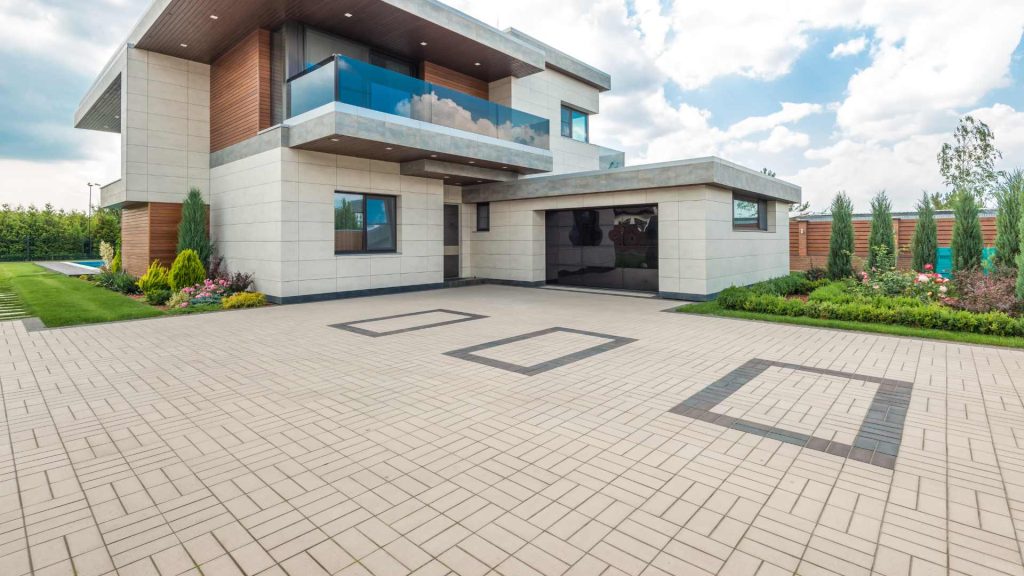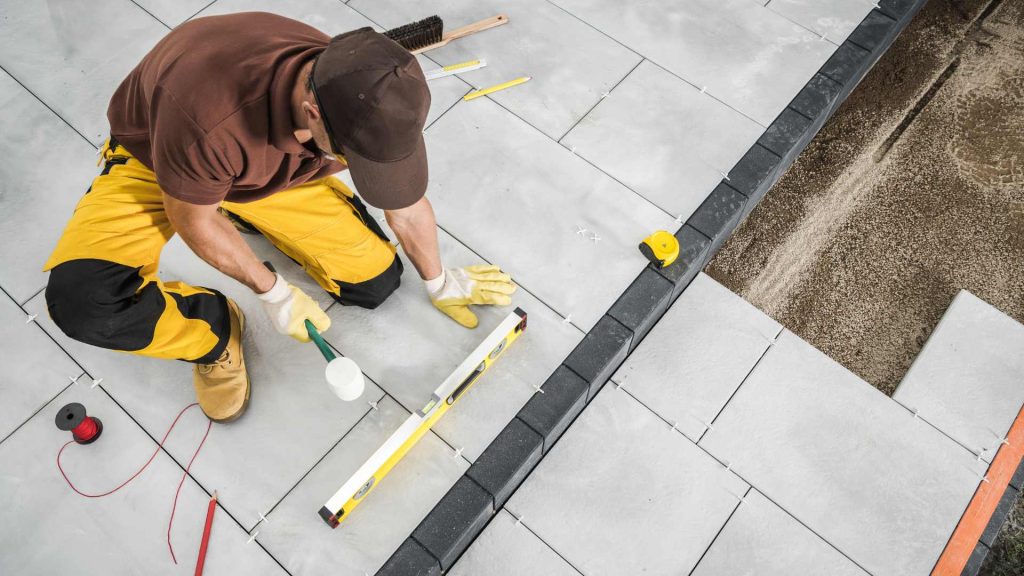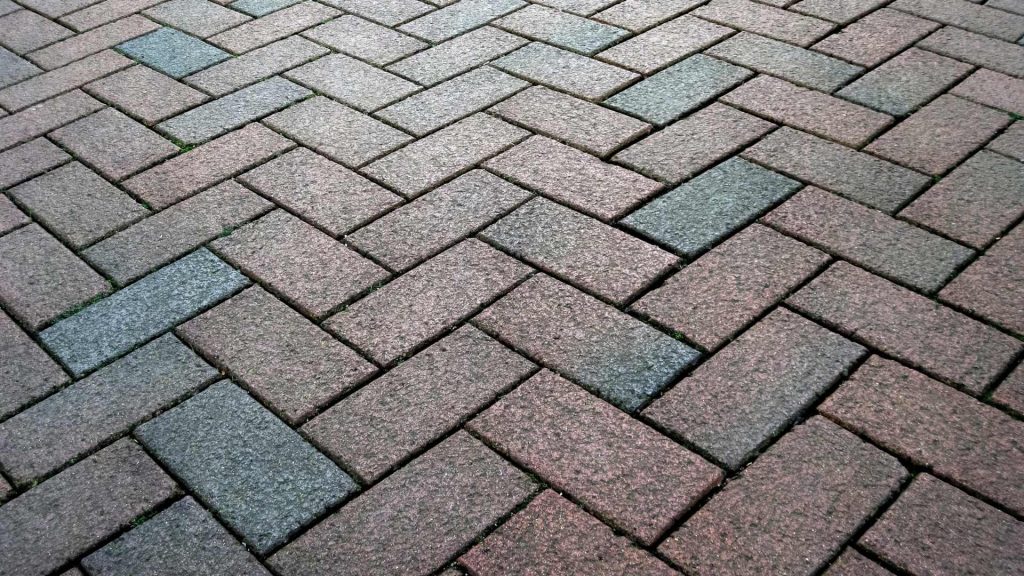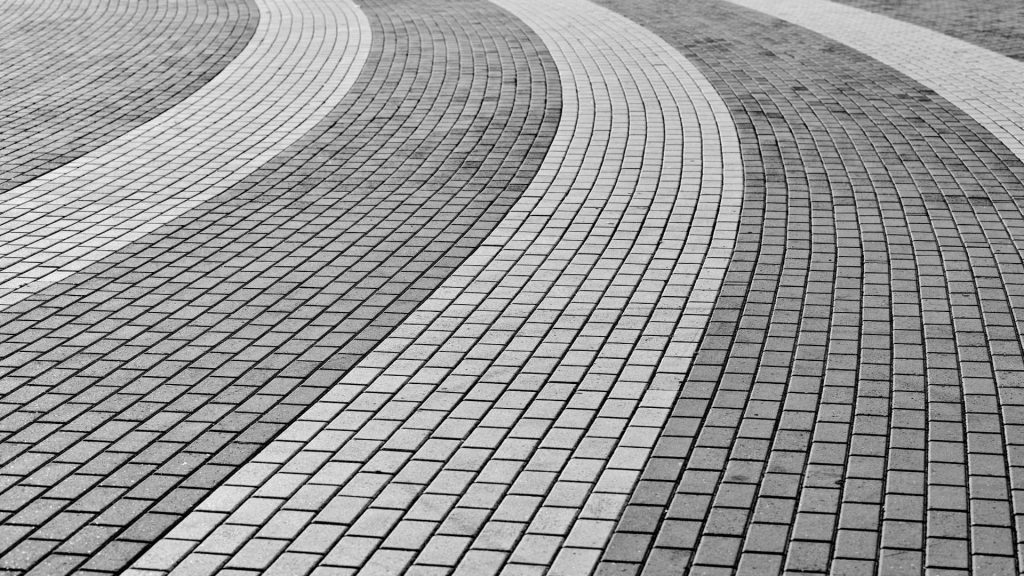The Short Answer: Choose the Fix That Solves the Real Problem
If your concrete is structurally sound and you have enough height at doors, steps, and drive entries, a paver overlay can deliver a fast, beautiful transformation with minimal demolition. If the slab is cracked through, heaving/settling, or you’re fighting drainage and slope issues, a full tear‑out and rebuild is the smarter, longer‑term solution—especially for driveways and pool deck areas where safety and water management are non‑negotiable.
At Pavers of Naples, we help homeowners across Park Shore, Pelican Bay, and Golden Gate Estates choose the right path. This guide walks you through the decision using climate and site conditions.
Overlay vs Tear‑Out: What Each Option Means
Paver Overlay (a.k.a. Pavers Over Concrete):
We install a new paver surface on top of your existing concrete slab. Depending on material and site, the assembly can be sand‑set over a separation layer, installed on a drainage/uncoupling mat, or bonded (select cases). Joints are filled with polymeric sand; edges are restrained to prevent creep.
Full Tear‑Out & Rebuild:
We demolish and remove the old concrete, correct subgrade and drainage, and install a new paver system over a layered, compacted stone base (or a permeable reservoir where appropriate). This resets slope, edges, heights, and water paths completely.

Climate & Site Realities That Drive the Decision
- Heavy summer rains & sandy soils: Drainage and slope are critical. A slab with poor slope will still shed water poorly under an overlay unless corrected with drains or re‑grading.
- Salt exposure: Near the gulf or on saltwater pool decks, materials and sealers must tolerate salt. Overlays require special attention to joints and edge sealing to prevent intrusion.
- Heat & surface temperature: Choose lighter tones and matte textures to keep surfaces cooler; important if your overlay would raise the deck closer to sun‑heated thresholds.
- Door thresholds & garage lips: An overlay adds height (often 1–2+ inches). That can create trip points or trap water unless managed with ramping, drains, or step adjustments.
When a Paver Overlay is a Great Choice (Checklist)
- The slab is stable: No widespread differential settlement or active heaving. Hairline cracks are fine; major cracks that move are not.
- You have height to spare: After adding pavers + bedding/mat, you still have safe door clearance (thresholds, sliders, lanais) and proper height at garage/apron transitions.
- Slope is acceptable: Existing concrete already drains away from the home. Small birdbaths can be fixed with channel drains or localized correction.
- Edges are adaptable: Stairs, coping, and borders can be modified or re‑capped to maintain safe rises and clean finishes.
- Use case: Patios, lanais, and some pool decks are common overlay candidates. Driveways can be overlaid in limited cases but demand a strict structural check.
Overlay Advantages:
- Less demolition mess and faster project turnaround.
- Often lower cost than full rebuild (site‑dependent).
- Keeps landscape and irrigation largely undisturbed.
- Provides an immediate visual upgrade and non‑slip texture options.

When Tear‑Out is the Smart Move (and Why)
- Active cracking or slab movement: A moving slab will telegraph through an overlay (edge gaps, reflective cracking at joints).
- Bad drainage slope: If water flows toward the house or ponds broadly, only a new base lets us reset elevations and correct grade.
- Height conflicts: Overlay would block doors, create code issues at steps, or cause vehicles to scrape at the garage lip.
- Driveways with heavy loads/turn‑ins: A fresh layered base delivers better long‑term performance than bonding to a failing slab.
- Root/utility issues: If you’ll need to repair roots or add utilities, tear‑out now prevents cutting through a brand‑new surface later.
Tear‑Out Advantages:
- Resets slope, drainage, and elevations for storm performance.
- Enables permeable systems or permeable bands to eliminate puddling.
- Simplifies future maintenance—pavers can be lifted and reset if necessary.
- Avoids locking defects under another layer.
Interlink (Blog): Link “hurricane‑ready hardscapes” to the storm‑season design post.
Interlink (Service): Link “driveway pavers” to the Driveway Pavers page.
Overlay Assembly Options (and Where We Use Them)
- Sand‑Set Over Separation Layer
We place a thin separation layer on the concrete and set pavers in bedding sand, then compact and fill joints with polymeric sand. Great for patios and lanais with adequate height and slope. - Drainage/Uncoupling Mat System
A specialized mat creates micro‑channels for water and uncouples minor slab movement from the paver layer. Useful over slabs with minor hairline cracking or where occasional moisture wicks through. - Bonded Overlay (Selective)
In very specific scenarios, pavers/tiles are bonded with adhesives/mortars engineered for exterior use. We use this approach sparingly because it can trap moisture if the slab wicks water; joints and expansion breaks must be meticulously planned.
Edge Restraint:
No matter the assembly, overlays need edge restraint at perimeters. We use low‑profile, concealed restraint or tie into walls/copings to prevent lateral creep.

Full Tear‑Out & Rebuild: What You Gain Technically
- Layered, compacted base that drains and resists settlement.
- The ability to set exact slopes (typically 1–2%) away from home foundations, lanais, and pool edges.
- Add permeable paver options with a stone reservoir to absorb storm bursts.
- Seamless transitions to lawns, planters, and drive aprons without awkward ramps.
- Freedom to re‑route downspouts or add channel drains where needed.
Cost & Timeline: What Drives the Budget in Collier County
- Overlay Cost Drivers: Surface square footage, slab remediation (cleaning, crack fill, spot leveling), choice of mat system, and edge/coping modifications. Sliders and door thresholds can add detail work.
- Tear‑Out Cost Drivers: Demo/haul‑out, base depth, access, drainage components (channel drains, basins), and permeable upgrades.
- Materials: Travertine and porcelain typically price higher than standard concrete pavers; large‑format styles take more care and time.
- Timeline: Overlays can be quicker when conditions are ideal; full rebuilds take longer but solve root issues.
Pool Decks & Lanais: Special Overlay Considerations
- Coping & Waterline: Ensure the new height aligns with pool coping; avoid trip lips at the water’s edge.
- Drainage Paths: Add channel drains at lanai thresholds; don’t trap water against screens or door tracks.
- Slip Resistance: Choose tumbled travertine or textured porcelain; add non‑slip to sealers on stone/concrete.
- Salt Exposure: Use salt‑resistant sealers; consider porcelain for the lowest maintenance near saltwater pools.
Driveways & Garages: Overlay or Rebuild?
- Garage Threshold: Overlay height can create a bump at the garage. We can feather with a transition ramp or, better yet, reset elevations with a rebuild.
- Turn‑In Loads: Heavy SUVs + tight turns call for a fresh base and robust edge restraint; tear‑out wins here more often.
- Drainage to Street: Ensure the drive sheds to the swale without sending water to neighbors. Permeable bands at the apron can help.
Step‑by‑Step: How We Execute Each Method
Overlay Workflow (Patio Example)
- Assessment & Moisture Test: Check slab soundness, slope, and moisture transmission.
- Cleaning & Prep: Degrease, remove coatings, repair spalls, fill non‑moving cracks.
- Separation/Mat & Bedding: Install separation or drainage mat; screed bedding.
- Lay Pavers & Borders: Set pattern, cut to edges, ensure expansion joints align with slab breaks as needed.
- Compact, Joint Sand & Activate: Vibrate with protector mat; polymeric sand activation.
- Edge Restraint & Sealing: Concealed restraint; breathable penetrating sealer for stone/concrete; joints only for porcelain.
Tear‑Out & Rebuild Workflow (Driveway Example)
- Demolition & Haul‑Out: Safe removal and recycle where possible.
- Subgrade & Base: Grade for drainage; install layered, compacted base to spec.
- Bedding & Lay‑Up: Screed bedding; install field and borders with tight joints.
- Edge Restraint: Hidden restraint matched to curves and turn‑ins.
- Polymeric Sand & Activation: Lock joints against washout, weeds, ants.
- Sealing & Handover: Apply appropriate sealer; provide care schedule for reseal cycles.
Permits, HOAs & Code Notes in Collier County
- Permits: Generally not required for like‑for‑like overlays on patios; driveway work (especially changing width, curb cuts, or drainage) may require permits/approvals. Always check with Collier County Growth Management and your HOA/ARC.
- Setbacks & Swales: Keep swales functional; do not redirect stormwater onto adjacent properties.
- Egress & Step Risers: If overlay changes step height more than allowed, you may need to adjust or rebuild steps for code compliance.
Real‑World Examples
- Park Shore Pool Deck Tear‑Out: Failing slope and spider cracks. We rebuilt on a new base with textured porcelain (joints sealed), added permeable relief bands near beds. Result: crisp lines and no pooling.
- Golden Gate Estates Driveway Rebuild: Heaving and root intrusion under an old slab. We removed, installed a deep base, and laid concrete pavers with strong edge restraint. Result: durable turn‑ins and better swale drainage.
FAQs
Will overlaying pavers trap moisture and cause mold?
Not when designed correctly. A drainage/uncoupling mat or breathable separation with proper edge ventilation allows incidental moisture to escape. We also plan channel drains where needed.
Can I overlay a cracked slab?
Hairlines: usually fine. Moving or wide cracks are a red flag; choose tear‑out or use a specialized system after engineering review.
How much height does an overlay add?
Typically 1–2.5 inches, depending on paver thickness and underlayment. We analyze all thresholds, steps, and garage transitions before recommending an overlay.
Do overlays last as long as rebuilds?
In the right conditions, overlays perform very well on patios and lanais. For driveways and bad‑slope sites, a rebuild usually delivers better longevity.
Is a permeable paver option possible with an overlay?
True permeable performance requires a stone reservoir base, so that’s a tear‑out/rebuild approach. You can still add permeable bands during tear‑out to handle storm bursts.
Pick the Path That Fixes Water, Height, and Movement
The right choice comes down to three tests: Does the slab move? Does water drain the right way? Do we have height? If you pass, an overlay can be a clean, efficient upgrade. If not, a tear‑out and rebuild protects your home, improves storm performance, and sets you up for easy maintenance for years.

